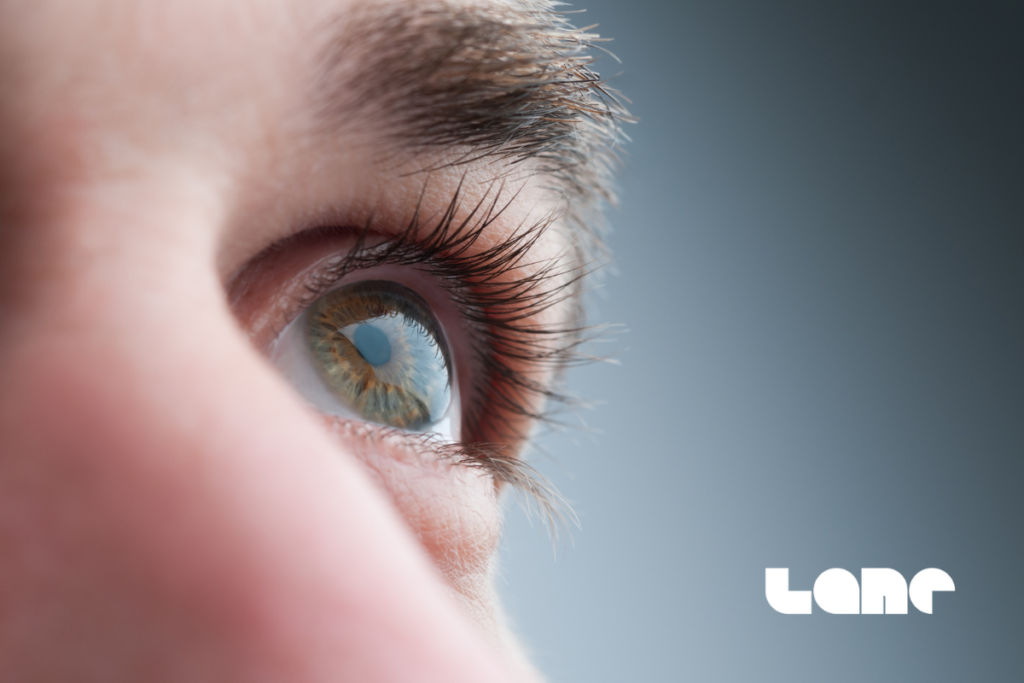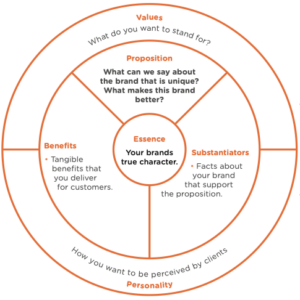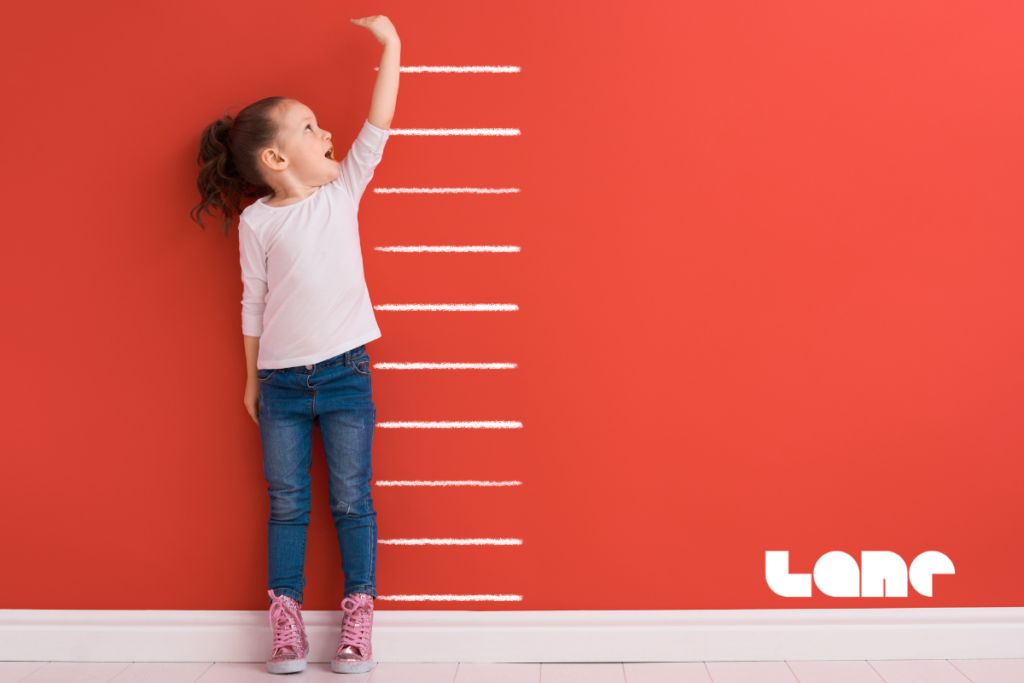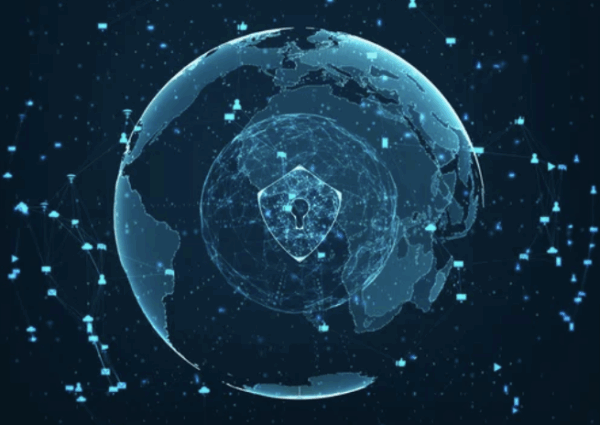Brand Distinctiveness: From Differentiation to Memorable Marketing
Sallie Bale • 20th Jun 2023
In the crowded marketplace of today, brand distinctiveness has emerged as a critical factor in capturing the attention of consumers. It’s no longer enough to simply differentiate your brand from others; you must create a brand that is instantly recognisable and memorable.

Positioning your brand used to mean differentiation. And whilst that’s not not the right strategy, distinctiveness is a much better place to focus your precious time and marketing dollars. You probably know the brand name of what should be an obscure product (washing machine limescale build-up prevention tablets) because of its jingle “Washing machine’s live longer with…..” read to the end of the article to see if you got that right!
This article will delve into the concept of brand distinctiveness, why it’s important, and how you can create it for your brand.
- What is Brand Distinctiveness?
- The Importance of Brand Distinctiveness
- Distinctive Brand Positioning
- Mark Ritson on Brand Distinctiveness
- Types of Distinctive Brand Assets
- Distinctive Brand Asset Examples
- Creating Brand Distinctiveness
- 5 Steps of Developing Distinctive Brand Assets
- Measuring Effectiveness
What is Brand Distinctiveness?
Imagine you’re an artist preparing for an exhibition at a popular art gallery. Known for its diverse collection, the gallery features everything from abstract paintings to lifelike sculptures. You know that to stand out, your work needs to be different. So, you spend countless hours creating a piece that’s unlike anything else – a painting that uses a unique technique or a sculpture made from an unusual material.
On the day of the exhibition, your unique piece intrigues visitors. It’s different, yes, but amidst the sea of other unique and different artworks, it doesn’t stand out as much as you’d hoped. It’s just another “different” piece in a gallery full of “different” pieces.
Now, consider another scenario. This time, instead of focusing solely on creating something “different,” you decide to create a series of artworks that all feature a distinctive, recurring element. Perhaps it’s a specific colour palette, a recurring motif, or a unique style that’s unmistakably yours.
At the exhibition, visitors are drawn to your collection. The recurring element catches their eye and makes your artworks memorable. Even after they leave the gallery and days pass, they remember your collection because of its distinctiveness.
In a marketplace full of “different” products or services, being distinctive – having that recurring, memorable element that’s unmistakably yours – can make your brand more memorable and recognisable than simply being “different.”
This shows brand distinctiveness is about creating unique and memorable elements that make your brand stand out in the minds of consumers. These elements, known as distinctive brand assets, can include logos, slogans, colours, and even sounds. Unlike differentiation, which focuses on product features and benefits, distinctiveness is about making your brand easily identifiable in any context.
The Importance of Brand Distinctiveness
Brand distinctiveness is rooted in neuroscience. This is why it’s so important to understand, and effective.
First, it helps consumers recognise your brand quickly and easily, even when they’re not actively looking for it. This phenomenon is known as the “pop-out effect”. We find it easier to remember objects that visually stand out. A unique logo or a specific colour scheme pops out among other brands grabbing our attention and implanting in our memory.
This can increase brand recall and recognition, leading to higher brand salience. This process is crucial in building memory structures, which are mental associations that consumers form about a brand. Over time, these memory structures influence consumers’ brand perceptions and purchase decisions.
Second, distinctive branding can help protect your brand from competitors. Distinctive brand assets are difficult for competitors to copy without risking legal action or consumer backlash. Moreover, from a neuroscience perspective, once a distinctive brand asset gets associated with a particular brand in a consumer’s mind, it’s difficult to re-associate it with another brand. This is due to the brain’s preference for consistency and its resistance to change, a concept known as cognitive dissonance.
Finally, distinctive branding can trigger emotional responses, which are key drivers of decision-making. Neuroscientific research shows our brains are wired to respond to emotionally stimulating content. Distinctive brand assets that evoke emotions can therefore create stronger connections with consumers, influencing their preferences and purchase decisions. (Pssst… that why our Brand Audit service is based on building Fame, Fluency and Feeling.)
In essence, brand distinctiveness leverages our brain’s visual processing, memory recall, resistance to change, and emotional responses to create a memorable and protective brand identity.
Branding and Attention

Furthermore, brand distinctiveness aligns with the well-established AIDA model, which stands for Attention, Interest, Desire, and Action. Distinctive branding first captures the attention of consumers. The unique and memorable elements of the brand then pique their interest. As consumers form positive associations and emotional connections with the brand, desire is cultivated. Finally, this desire, coupled with the brand’s distinctiveness and the memory structures that have been built, motivates consumers to take action, such as making a purchase or recommending the brand to others.
Distinctive Brand Positioning
Distinctive brand positioning is the strategy of creating a unique place in the market for your brand that’s instantly recognisable and memorable to your target audience.
At the heart of distinctive brand positioning is the brand essence – the core attributes that define the brand and make it unique. An authentic and motivating brand essence is one that truly represents what the brand stands for and inspires consumers to engage with the brand. It’s the emotional and intangible spirit that underpins all interactions with the brand.
We use a brand strategy wheel to develop distinctive brand positionings for our clients.

For example, if a brand’s essence is about empowering individuals to lead healthier lives, its distinctive brand positioning might involve unique health-focused products, a distinctive visual identity that evokes feelings of vitality, and a consistent brand voice that communicates empowerment and positivity.
This brand essence should be authentic, reflecting the true values and purpose of the brand. It should also be motivating, inspiring consumers to engage with the brand. When a brand essence is both authentic and motivating, it can drive strong emotional connections with consumers, making the brand not only distinctive but also meaningful and valuable in the eyes of its audience.
In essence, distinctive brand positioning is about bringing an authentic and motivating brand essence to life through unique and consistent brand assets. It’s about creating a brand that stands out in the market and resonates deeply with consumers
Find out more about building a distinctive brand
Mark Ritson on Brand Distinctiveness
Mark Ritson, a renowned marketing professor and consultant, has been a vocal advocate for brand distinctiveness. He argues that marketers should focus less on differentiation, which he believes is often fleeting and hard to achieve, and more on distinctiveness, which can provide a lasting competitive advantage.
He actually urges brand managers not to play with any distinctive assets for the first 40 years after they are created! That’s true commitment to consistency.
Types of Distinctive Brand Assets
What exactly can we use as a distinctive brand asset? Well, they can be almost anything that engages one or more of the five senses – sight, hearing, touch, smell, and taste – to capture attention and create emotional connections with your audience.
Visual Assets
These are the most common type of brand assets and include elements like logos, colour schemes, typography, and packaging design. For example, the Coca-Cola script or the golden arches of McDonald’s are visual assets that are instantly recognisable. Visual assets often evoke emotions through colour psychology and design aesthetics. It might also include narrative or tone of voice to connect to emotions through the written medium.
Auditory Assets
These include distinctive sounds, jingles, or brand voices that consumers associate with your brand. The Intel five-note bong or the Netflix ‘ta-dum’ sound are examples of auditory assets. Sounds can trigger emotional responses and memories, making them powerful tools for emotional connection.
Tactile Assets
These are physical elements that consumers can touch or feel, such as the texture of a product or its packaging. So the shape and feel of a Coca-Cola glass bottle is a tactile asset. Tactile experiences can evoke a range of emotions, from comfort and familiarity to surprise and delight.
Olfactory Assets
Olfactory means scent or smell. The scent of a Lush store or the smell of a new car can serve as olfactory assets. Scents link closely to memory and emotion, making them a potent tool for emotional branding.
Taste Assets
Unique flavours associated with a brand, which as you can imagine are particularly relevant for food and beverage companies. The secret recipe of KFC or the distinctive taste of a Coca-Cola drink are examples of taste assets. Taste can evoke strong emotional responses, from pleasure and satisfaction to nostalgia.
By thinking about the senses like this, we can use these assets to capture and keep attention and create a powerful impression. They evoke emotions, which are key to forming strong connections and understanding between your brand and your audience. So the more senses an asset engages, the stronger the emotional connection and the more distinctive the brand becomes. As we all know from our daily life, emotionally charged experiences are more memorable and can lead to more positive brand associations and loyalty.
Distinctive Brand Asset Examples
So far, we’ve mentioned a fair few distinctive brand assets. So hopefully you’ll have a good idea of what they are, and what might work for your organisation. For example, in the food sector, a good example would be Marmite. That’s because its distinctive jar shape, bold colours, and the “Love it or hate it” slogan make it stand out on supermarket shelves and in consumers’ minds.

Take Our Distinctive Brand Asset Quiz
Distinctive Brand Assets Quiz
10 Examples of Distinctive Brand Assets
Here are 10 more examples of distinctive brand assets for you to have a think about:
- Coca-Cola’s Bottle Shape: The contour bottle shape of Coca-Cola is distinctive and immediately recognisable, even when the logo is not visible.
- McDonald’s Golden Arches: The simple, yellow ‘M’ is recognised globally and is now so well recognised that they don’t even need to use the full logo in their advertising, and people still know who they are.
- Tiffany & Co.’s Blue Box: The robin’s-egg blue box is synonymous with Tiffany & Co. and often signifies a luxury gift even before the box is opened. Say “Tiffany Blue” to the majority of people in their market, and they’ll immediately be able to bring the exact colour to mind.
- Netflix’s Sound Logo (Ta-Dum Sound): The Netflix “ta-dum” sound that plays when you start a show or movie has become a distinctive audio asset for the brand.
- Intel’s Five-Note Bong: The five-note “bong” at the end of Intel’s commercials is a distinctive audio asset that’s become associated with the brand.
- Cadbury’s Purple: Cadbury has used a particular shade of purple in its packaging and marketing for over a century, making it a distinctive brand asset.
- Lush’s Store Scent: Walk past a Lush store, and you’ll recognise it immediately by the distinctive, strong scent wafting from the store.
- Mastercard’s Interlocking Circles: The two interlocking circles, one red and one yellow, form a distinctive and globally recognised symbol for Mastercard.
- Kit Kat’s Break Time: The concept of “having a break” is a distinctive brand asset for Kit Kat, reinforced through years of consistent marketing.
- M&M’s Characters: The animated M&M’s characters used in advertising campaigns are distinctive brand assets that bring the personality of the brand to life.
Creating Brand Distinctiveness
Creating brand distinctiveness involves identifying and developing distinctive brand assets. But if you don’t know where to start, a brand audit can really help clarify what you have, what you need and how they’re perceived by consumers. From there, you can identify opportunities to create new assets or strengthen existing ones.
Consistency is key in this process. Once you’ve identified your distinctive brand assets, it’s important to use them consistently across all touchpoints. This includes your website, social media, advertising, packaging, and physical locations. Consistent use of distinctive brand assets helps reinforce their association with your brand in the minds of consumers, strengthening your brand’s distinctiveness over time.
Take the example of the food retailer, Whole Foods Market. They consistently use a particular green colour in all of their branding materials, from their logo to their store design. This green not only aligns with their brand’s focus on natural and organic foods, but it also stands out in the retail landscape, which often leans towards reds and blues. Over time, consumers have come to associate this green colour with Whole Foods, making it a distinctive brand asset.
Developing Distinctive Brand Assets: 5 Steps
Implementing distinctive brand assets involves several steps. Here’s a general guide you can follow, outline the key five steps:
- Brand Audit: Conduct a brand audit to understand your current brand assets and how consumers view them. This involves reviewing all your current brand elements, including your logo, colour scheme, typography, imagery, slogans, sonic branding, characters and ambassadors and any other elements associated with your brand. You can also identify any gaps in your distinctive brand assets suite.
- Identify Potential Assets: From your audit, identify which elements have the potential to become distinctive brand assets. These should be elements that are unique to your brand and can be consistently used across all touchpoints. Think about the different types of assets we’ve discussed based on the sense and live examples from other brands.
- Research and Testing: Conduct market research to understand how audience understand your potential assets. This can involve surveys, focus groups, or A/B testing. The goal is to understand which elements are most memorable and positively associated with your brand.
- Consistency: Once you’ve identified your distinctive brand assets, use them consistently across all brand touchpoints. This includes your website, social media, advertising, packaging, and physical locations. Don’t forget tone of voice and brand messaging! Consistency helps reinforce the association between these assets and your brand in the minds of consumers.
- Protect Your Assets: If possible, legally protect your distinctive brand assets. This can involve trademarking your logo, colour scheme, or any other unique brand elements to prevent competitors from copying them.
Remember, creating distinctive brand assets is an ongoing process that requires time and consistency. But when done right, it can significantly enhance your brand’s visibility and recognition in the market.
Measuring Effectiveness
Use brand tracking studies to measure the effectiveness of your distinctive brand assets over time. This can help you understand how well these assets are driving brand recognition, recall, and preference.

Conclusion
Brand distinctiveness is a powerful tool for capturing consumer attention and building a memorable brand. By focusing on creating and strengthening distinctive brand assets, you can increase your brand’s salience and protect it from competitors. So remember, in today’s crowded marketplace, being different is not enough; you need to be distinctive. Just like Calgon.


